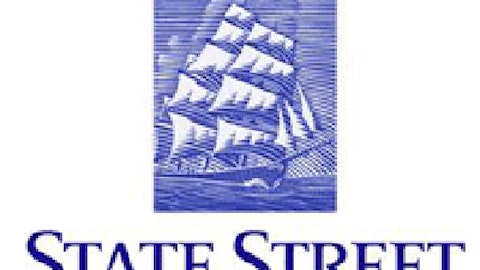Asset management companies basically run mutual funds and provide investment advisory services to high net-worth individuals and institutions.
They are an interesting sector to follow and might offer investors a more profitable way to play any expectant bull market.
The pro’s and con’s of asset managers
Asset management is a very lucrative business. Most revenues are generated based on the value of Assets Under Management (“AUM”). Though financial market fluctuations impact AUM levels, these companies are pretty consistent moneymakers. A majority earned substantial profits even through the 2008-2009 financial crisis.
AUM is the industry’s key indicator. Significant increases in AUM are mostly gained through market appreciation or acquisition of other, typically smaller, asset managers rather than inflows from new investors. The competition for investor assets is fierce. Various exchange traded funds, low-cost index funds, and the allure of hedge funds have all greatly reduced the appeal of the legacy mutual fund.
The leverage asset manager stocks have over the general market during a bull run might be of the most interest for investors. From the stock market bottom in 2009 to their high in 2013, the average share price for a sample of mutual fund providers has exploded about 3.5 times compared to an approximate 2.5 times rise in the S&P 500. At the same time, some of these firms paid dividends that yielded between 1% and 3%.
Buy the manager not the product
Investing in the manager seems preferable to buying their product when expecting a market rise. Some of the major publicly traded firms I follow are:
Franklin Resources, Inc. (NYSE:BEN), which operates as Franklin Templeton Investments, is a fairly large and very efficient asset manager with a roughly 25% cash earnings profit margin and average compensation/distribution costs of about 56% of revenues. The company announced recent quarterly revenues of $2.0 billion versus $1.8 billion in 2012 and net income of $573 million, compared to $503 million from the previous year.
Franklin Resources, Inc. (NYSE:BEN)’s AUM was $823.7 billion at March 31, 2013, up 5% during the quarter. The increase was primarily due to $24.5 billion in market appreciation and $18.3 billion of net new flows, mostly in taxable global fixed income products. A solid performer, assets increased 14% year over year, primarily due to market appreciation and roughly 3.6% of net new inflows.
T. Rowe Price Group, Inc. (NASDAQ:TROW) is one of the most efficient managers. It has around a 29% cash earnings profit margin and very low compensation/distribution costs, around 42% of revenues. The firm reported net sales of $816 million and net income of $242 million for its latest quarter. On a comparable basis, sales were $729 million and net income was $198 million in 2012.
Their AUM at March 31 totaled a record $617.4 billion. Net cash inflows during the quarter were a lackluster $3.3 billion or around 2% higher annualized. Lately T. Rowe Price Group, Inc. (NASDAQ:TROW) has specialized in target-date portfolios. These invest in multiple underlying funds that automatically adjust to a more conservative allocation as the client ages. Gaining in popularity, target-date funds attracted virtually all of the quarterly inflow.
Eaton Vance Corp (NYSE:EV) is a smaller asset manager with consolidated AUM around $260 billion. The company might be the most adaptable, however. Their innovative focus on current popular investment trends has helped assets grow at around a 9% annualized rate over the last couple of quarters. Floating rate income, commodity and currency based, and other alternative type funds were the main drivers of growth.
The company also reported recent quarterly earnings of $64 million, with a cash earnings margin around 18%, up from $53 million in the same quarter the year before. Revenue rose 9 percent to $332 million from $305 million, as investment and advisory fees rose 11% to $277 million.
A potential turnaround play
Legg Mason Inc (NYSE:LM) could be an interesting turnaround situation. Once an industry darling, it is currently struggling. The company reported adjusted income for the fourth quarter of $67 million, a 27% drop from the previous quarter and down 48% from the comparable fiscal 2012 period. Operating revenues were $668 million, down 1% from the prior quarter but up 3% from fiscal 2012.
Legg Mason Inc (NYSE:LM)’s AUM was $664.6 billion, up 2% from December 31, 2012 and up 3% from March 31, 2012. The quarterly increase was mainly due to $12.1 billion of market performance and $5.4 billion from an acquisition. These items were offset by a disappointing $1.8 billion in net fund outflows.
The company isn’t very efficient. It operates primarily through 12 asset managers, each generally run as a separate business. This setup seems to generate much less revenue, about $.40 of annualized revenue for every $100 of AUM, than its peers. Comparatively, T. Rowe Price Group, Inc. (NASDAQ:TROW) gets around $.50 per $100 of AUM, $.60 for Eaton Vance Corp (NYSE:EV), and $1.00 per $100 for Franklin Resources, Inc. (NYSE:BEN). The combination of lagging revenue generation and associated higher than average compensation/distribution costs show up in Legg Mason Inc (NYSE:LM)’s relatively weak 9% cash earnings profit margin.
But the company is trying to improve its performance. The firm changed their CEO, reorganized the executive management team, and adopted a new capital management plan to restructure and reduce debt and return capital to shareholders over the last year. A major reason for these changes has been activist shareholder Nelson Peltz. Peltz and his Trian Fund, with a 10% stake and a seat on the board, has been a positive agent for change in many companies and hopes to get this one turned around. If he can, there might be a substantial amount of value to be realized in the shares.
Conclusion
Asset management companies are an interesting way to play an expectant bull market. They are highly profitable and offer significant leverage with relatively low long-term business risk. Investigating these firms when times are tough might pay big rewards when markets eventually improve.
The article Asset Managers: A Market Proxy and More originally appeared on Fool.com and is written by Bob Chandler.
Bob Chandler has no position in any stocks mentioned. The Motley Fool has no position in any of the stocks mentioned. Bob is a member of The Motley Fool Blog Network — entries represent the personal opinion of the blogger and are not formally edited.
Copyright © 1995 – 2013 The Motley Fool, LLC. All rights reserved. The Motley Fool has a disclosure policy.





